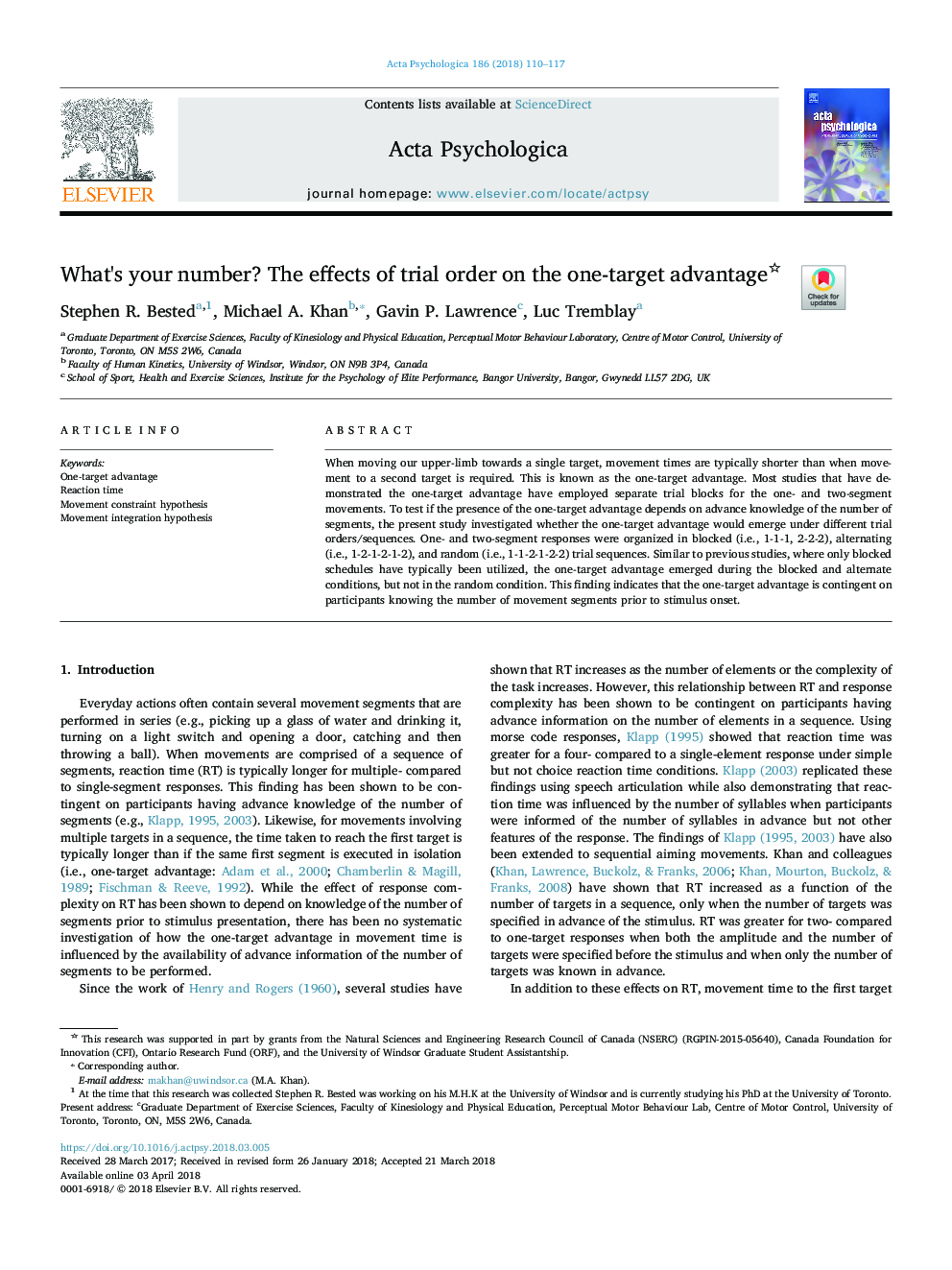| Article ID | Journal | Published Year | Pages | File Type |
|---|---|---|---|---|
| 7276723 | Acta Psychologica | 2018 | 8 Pages |
Abstract
When moving our upper-limb towards a single target, movement times are typically shorter than when movement to a second target is required. This is known as the one-target advantage. Most studies that have demonstrated the one-target advantage have employed separate trial blocks for the one- and two-segment movements. To test if the presence of the one-target advantage depends on advance knowledge of the number of segments, the present study investigated whether the one-target advantage would emerge under different trial orders/sequences. One- and two-segment responses were organized in blocked (i.e., 1-1-1, 2-2-2), alternating (i.e., 1-2-1-2-1-2), and random (i.e., 1-1-2-1-2-2) trial sequences. Similar to previous studies, where only blocked schedules have typically been utilized, the one-target advantage emerged during the blocked and alternate conditions, but not in the random condition. This finding indicates that the one-target advantage is contingent on participants knowing the number of movement segments prior to stimulus onset.
Keywords
Related Topics
Life Sciences
Neuroscience
Cognitive Neuroscience
Authors
Stephen R. Bested, Michael A. Khan, Gavin P. Lawrence, Luc Tremblay,
